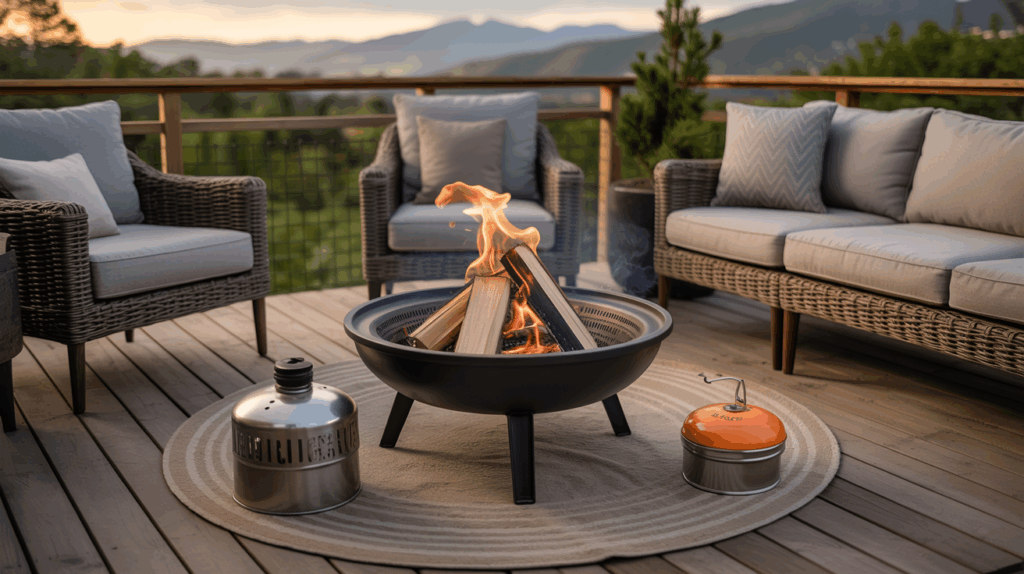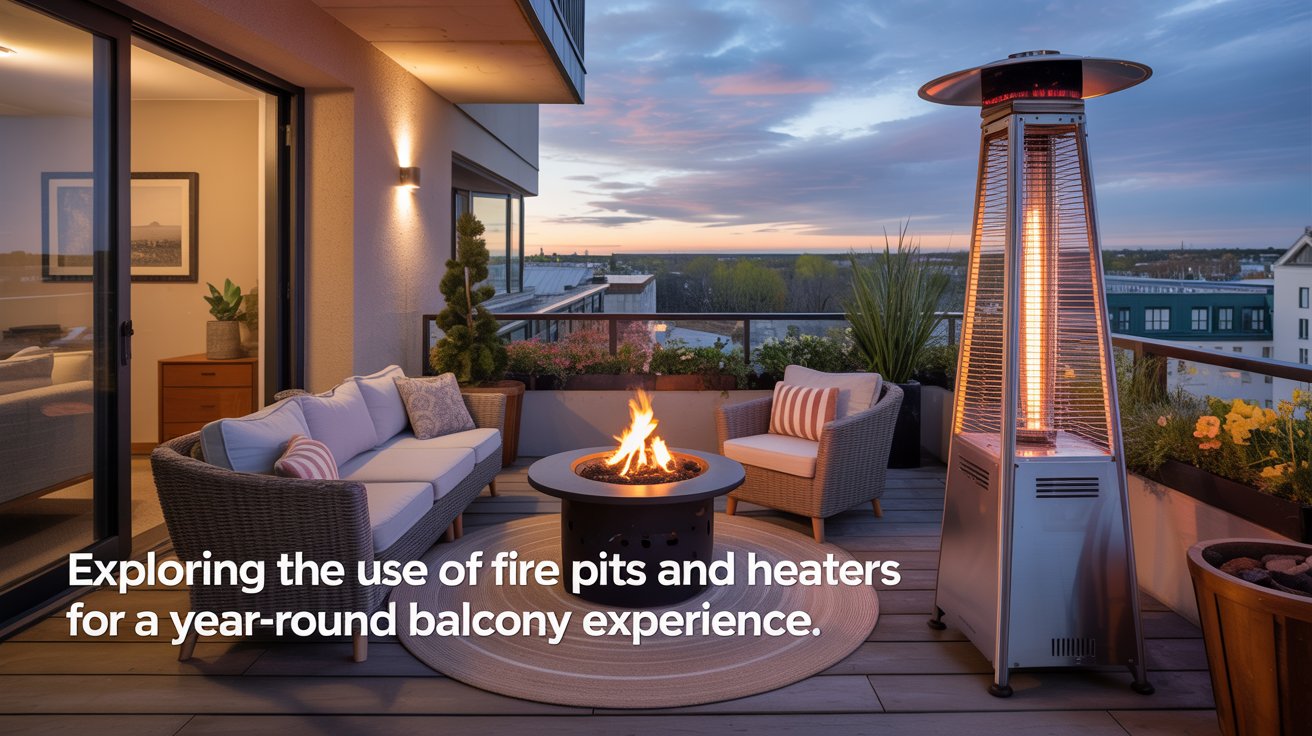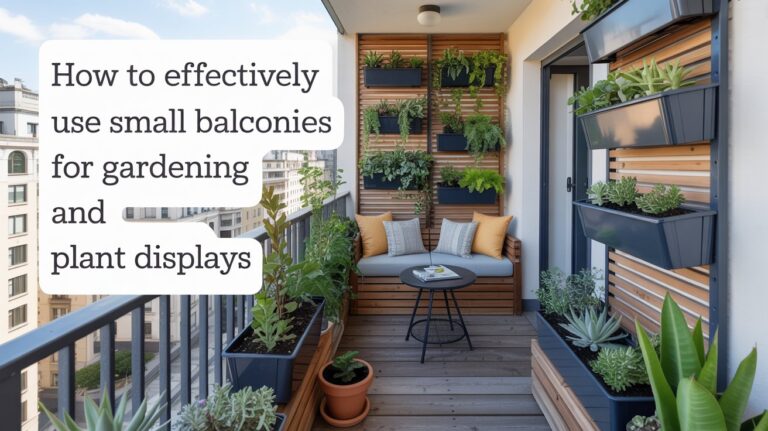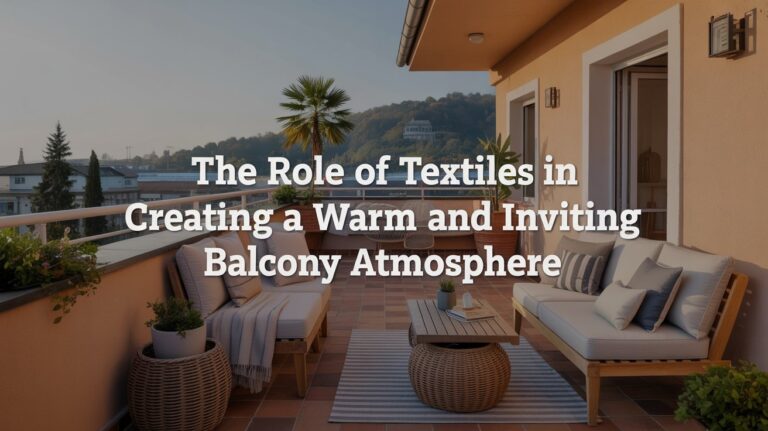Exploring the Use of Fire Pits and Heaters for a Year-Round Balcony Experience
I have been, or can be if you click on a link and make a purchase, compensated via a cash payment, gift, or something else of value for writing this post. As an Amazon Associate, I earn from qualifying purchases. Please read my full Affiliate Disclosure for more information.
To create a year‑round balcony experience, you’ll want a balanced approach to fuel, safety, and design. Choose approved fuels compatible with your pit and local rules, prioritizing steady heat and easy ignition while considering venting and clearances. Plan compact, efficient placement that concentrates warmth without sacrificing space, and implement robust safety measures—shutoffs, detectors, and barriers. Maintain clean burners, inspect fittings, and store units properly for seasonal use. With these foundations, you’ll discover practical strategies that extend comfort beyond seasons.
Key Takeaways
- Choose fuels approved for residential use, balancing heat, burn time, ignition ease, and local regulations for year-round balcony use.
- Prioritize ventilation, containment, and compliance with clearances and wind considerations to ensure safe operation in all seasons.
- Opt compact, adaptable fire pits and heaters with zone-heating layouts to maximize comfort without crowding balcony space.
- Implement regular maintenance: inspect fuel lines, clean vents, test shutoffs, and protect units during off-seasons.
- Harmonize warmth with ambiance using dimmable lighting, weather-resistant materials, and privacy elements for year-round appeal.
Choosing the Right Fuel for Your Balcony Fire Pit
Choosing the right fuel for a balcony fire pit starts with safety and performance in mind: select fuels that are approved for residential use, compatible with your pit’s design, and compliant with local regulations. You’ll evaluate fuel alternatives by heat output, burn duration, and ease of ignition, then align them with venting, clearance, and decking materials. Prefer steady, controllable flames over flicker-prone options, reducing spillover and smoke. Consider environmental impact alongside cost, availability, and maintenance. Document storage, safety shutoffs, and spill protocols for each option. Final choice balances efficiency, aesthetics, and reliability without compromising structural or respiratory safety.

Safety Considerations for Balcony Heating
Safety considerations for balcony heating demand a disciplined, design-focused approach that prioritizes containment, ventilation, and compliance from the outset. You’ll evaluate exposure, clearance, and wind effects to minimize risk while preserving usable space. Adhering to standards guides both fire pit safety and heater installation decisions, ensuring robust connections and proper fuel storage.
- Verify approved devices and clearances before installation
- Implement combustible-material shielding and perimeter barriers
- Ensure adequate ventilation and non-enclosed mounting
- Plan automatic shutoff, CO/gas detection, and fire emergency procedures
Design and Placement to Maximize Small-Space Comfort
When maximizing comfort in small balcony spaces, thoughtful design concentrates heat and light where they’re most effective while preserving usable area; strategic placement of fire pits and heaters reduces perceived crowding and improves accessibility. You should select compact form factors and mount options that minimize footprint without sacrificing thermal output. Align fire pit materials and heater spectrum with ambient airflow and wind exposure to prevent overheating localized zones. Zone heating strategies—perimeter warmth, focal warmth, and seating offsets—enhance perceived space. Document tolerances for clearance, substrate load, and fire safety setbacks, ensuring predictable performance and repeatable comfort across varying weather conditions.
Maintenance and Seasonal Care for Outdoor Heaters
Regular maintenance and seasonal care are essential to preserve performance and safety in outdoor heaters. You’ll inspect components, seal integrity, and fuel connections before season changes to protect heater durability and reliability during chilly months.
1) Inspect connections and hoses for wear, replacing damaged parts promptly to prevent leaks.
2) Clean venting and burner ports, removing debris to maintain efficient combustion.
3) Check safety shutoffs and tilt/flip sensors; recalibrate if needed for consistent operation.
4) Store or cover units appropriately, protecting fire pit accessories from moisture and corrosion when not in use.
Balancing Ambiance and Warmth With Style and Rules
Balcony fire features must harmonize ambiance with warmth while respecting space, safety, and architectural intent. You balance focal points, fuel type, and heat distribution to avoid overpowering the scene. Choose decorative lighting to complement flames, not compete with them; warm, dimmable fixtures create cohesion and soft visual depth. Materials should reflect the balcony’s aesthetic while resisting heat and weathering. Privacy screens can frame zones without isolating them, preserving sightlines and airflow. Establish rules for operation, maintenance, and occupancy to reduce risk while preserving comfort. Documentation of clear guidelines helps guests enjoy warmth, style, and function in harmony.
Conclusion
To optimize year‑round balcony comfort, select a fuel type that aligns with your space, local regulations, and maintenance tolerance, then plan placement to maximize heat distribution without compromising safety. Prioritize sealed, purpose‑built outdoor units and sensible wind clearance, using ember control and automatic shutoffs for reliability. Integrate weatherproof storage and periodic seasonal checks to preserve efficiency. Balance ambiance with code compliance by pairing warm glow with discreet design, acoustic dampening, and unobtrusive screening that respects neighbors and rules.






